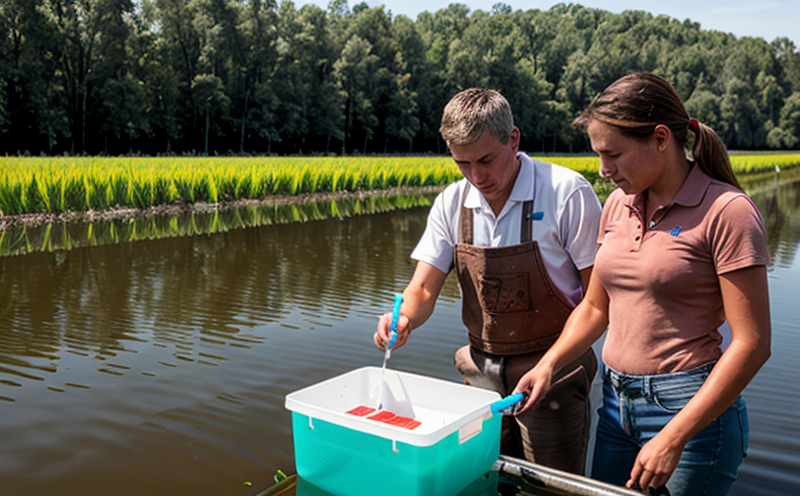Strontium Content Testing in Agricultural Water
Strontium content testing in agricultural water is a critical service aimed at ensuring that water used for irrigation does not contain excessive levels of strontium, which can be toxic to crops and livestock. Strontium is an alkaline earth metal found naturally in soil and water but can accumulate due to industrial pollution or geological processes. High concentrations of strontium in agricultural water may lead to crop damage, reduced yield, and potential contamination of the food chain.
Strontium testing helps farmers and agricultural organizations comply with local, national, and international standards for safe irrigation practices. This service is particularly important in areas where groundwater or surface water sources are used for agriculture. Accurate measurement of strontium content ensures that water quality meets regulatory requirements set by bodies such as the World Health Organization (WHO) and the Environmental Protection Agency (EPA).
Our laboratory uses advanced analytical techniques to measure strontium levels in agricultural water samples, providing reliable data for decision-making. The testing process involves a series of steps including sample collection, preparation, analysis using atomic absorption spectrophotometry or ICP-MS, and final reporting. This ensures that the results are accurate and can be trusted by stakeholders.
For quality managers and compliance officers, this service offers peace of mind knowing that their operations adhere to best practices. R&D engineers benefit from detailed data on water quality which is essential for developing new irrigation systems or crop varieties. Procurement teams gain assurance that the water they source meets strict standards, reducing risks associated with non-compliant inputs.
The importance of strontium content testing extends beyond just agricultural water; it also impacts soil health and ecosystem balance. By monitoring strontium levels, we help prevent environmental degradation caused by excess metal buildup in soils and watersheds. This proactive approach supports sustainable farming practices that protect both human health and the environment.
| Sample Type | Preparation Steps | Analytical Technique Used | Reporting Format |
|---|---|---|---|
| Water samples | Careful collection from irrigation points; filtration if necessary. | ICP-MS or Atomic Absorption Spectrophotometry | Detailed report including concentration levels and compliance status. |
Applied Standards
This service adheres to several international standards that ensure the accuracy and reliability of our results. These include ISO 17025 for laboratory accreditation, EN ISO/IEC 17025:2017 for technical requirements for the competence of testing and calibration laboratories, and ASTM D1193-18 for specification of gravity-dichromated methods for determining water quality parameters.
By aligning our procedures with these standards, we provide clients with confidence that they are receiving high-quality laboratory services. These guidelines cover everything from sample handling to the calibration of instruments and reporting formats, ensuring consistency across all tests performed by our team.
Scope and Methodology
| Step | Description |
|---|---|
| Sample Collection | Carefully collect water samples from irrigation points ensuring they are representative of the entire field or area being tested. |
| Preparation | Filtration may be required to remove particulates and other impurities before analysis. |
| Analytical Procedure | Use ICP-MS or atomic absorption spectrophotometry for precise measurement of strontium concentration. |
| Data Analysis | Compare results against predefined thresholds to determine compliance with local regulations. |
| Reporting | Compile all data into a comprehensive report detailing findings and recommendations for corrective actions if necessary. |
Industry Applications
In the agriculture sector, strontium content testing plays a vital role in maintaining sustainable farming practices. Farmers and irrigation specialists rely on accurate testing to ensure that their crops receive water free from harmful substances like strontium. This not only enhances crop quality but also contributes to long-term soil health.
For researchers working in agricultural R&D, this service provides crucial data points that aid in understanding how different factors affect plant growth and productivity under varying water conditions. Additionally, it supports the development of new technologies aimed at improving irrigation efficiency while minimizing environmental impact.





